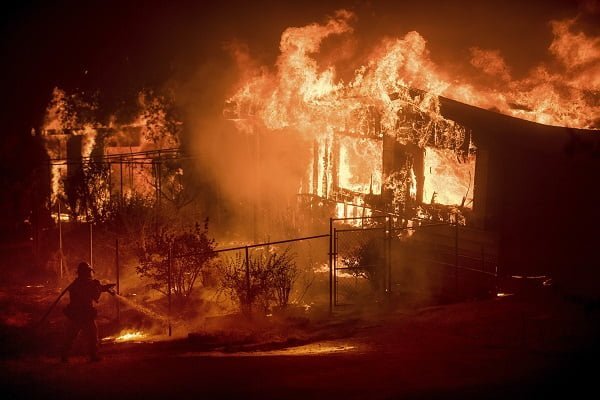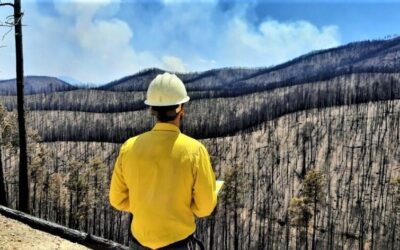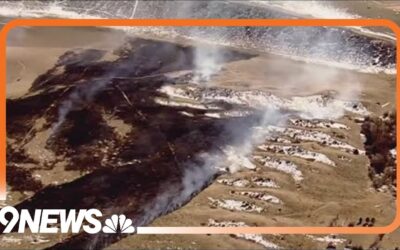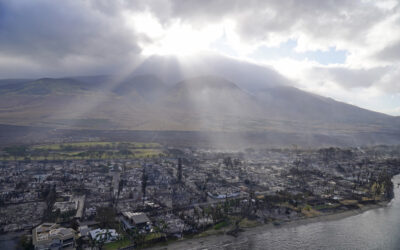How to pay for rescues and recovery

In this Sunday, July 9, 2017, file photo, a firefighter sprays water as flames from a wildfire consume a residence near Oroville, Calif. As of September 2017, California has already burned through more than half the $427 million it set aside in its Emergency Wildfire Suppression Fund, with Southern California’s fearsome Santa Ana wind season looming. Even if that fund runs dry, the state will tap other sources, said H.D. Palmer, spokesman for the state Department of Finance. (AP Photo/Noah Berger, File)
By CHRISTINA A. CASSIDY and BOB SALSBERG, Associated Press
ATLANTA (AP) — A summer of natural catastrophes, from epic hurricanes to scorching wildfires, has exposed another peril in disaster-prone states: How to pay for the rescues, repairs and rebuilding.
The combined tab from Hurricanes Harvey and Irma is expected to hit $200 billion or more. While the federal government is expected to pay most of that, the affected state and local governments have to start paying for recovery now and eventually could be on the hook for tens of millions of dollars or more.
States vary on how prepared they are to weather such costs. Florida and South Carolina, both hit by Hurricane Irma, are among the dozen or so states that do not have dedicated disaster funds and opt to cover the expenses after the fact, potentially by dipping into reserves or shifting money from other state agencies.
Experts say such pay-as-you-go disaster funding can be risky. Add an economic downturn when reserves are low and budgets are tight, and state and local officials could easily find themselves struggling to pay for recovery and rebuilding.
Even putting money into a dedicated disaster fund may not be enough.
In Montana, where wildfires raged across the state this summer, threatening hundreds of homes and destroying a historic lodge in Glacier National Park, the firefighting costs so far have exceeded the amount set aside in a special disaster fund by $20 million.
“It took us all by surprise,” state Rep. Nancy Ballance said.
All but a handful of states maintain so-called rainy day accounts, but in most cases “rainy day” is a misnomer: The money is typically used to get through economic downturns rather than responding to natural disasters. States tapped, and in many cases depleted, their rainy day funds to avoid massive cuts and maintain critical services after tax revenue plummeted during the recession.
Several states have struggled to rebuild their savings since then because tax revenue hasn’t rebounded enough to provide a cushion. In all, 33 states reported tax revenue coming in below forecast last year.
New Jersey’s rainy day fund has been empty since 2009. Pennsylvania’s is so small it would barely fund government operations for two hours, according to a recent study by the Pew Charitable Trusts.
Texas, hit hard by Hurricane Harvey last month, has the largest rainy day fund of any state — $10 billion — but state officials are keeping that as a last resort. Gov. Greg Abbott has said he wants to consider what other funding might be available first. That could include tapping into money already allocated to state agencies.
Others in Texas, including Lt. Gov. Dan Patrick, have advocated for tapping into reserves now.
“If this isn’t a rainy day, I don’t know what is,” Patrick said last week.
Georgia is one of the states better prepared financially to handle the unexpected costs of a disaster. It has a dedicated emergency fund with roughly $20 million available annually and a rainy day fund with approximately $2.4 billion, England said.
“Thankfully, our economy is in pretty good shape right now,” said state Rep. Terry England, chairman of the House budget committee in Georgia, where all 159 counties reported damage from Hurricane Irma. “If this had hit in 2010 or 2011, it might have been a little bit different.”
In addition to budget reserves, 28 states have established special funds to help residents and businesses after a disaster. The downside: Several are not currently funded, according to the National Emergency Management Association.
California is among the states with a dedicated disaster fund — for fighting wildfires — but already has burned through more than half the $427 million it set aside this year, with Southern California’s fearsome Santa Ana wind season looming. Even if that fund runs dry, however, the state will tap other sources, said H.D. Palmer, spokesman for the state Department of Finance.
“There has never been a situation when the state’s finances would be an impediment to deploying crews and materials to knock down a fire as soon as possible to save lives and property,” he said.
Montana’s wildfire season has left lawmakers there facing difficult decisions.
The state typically keeps between $50 million and $100 million on hand for wildfire costs. This year, after a relatively wet winter and facing an estimate of lower than expected tax revenue, lawmakers authorized the governor to use some of that money to help fill a budget gap — leaving about $30 million in the fund.
Then disaster struck in the form of several large wildfires, which the state estimates have burned about 10 times as much land as last year’s fires. So far, the state has spent roughly $58 million on fire suppression since the beginning of July.
“We thought we would be OK with fires,” said Ballance, chairwoman of the House budget committee, “so we took the money to use in other ways.”
With tax revenue down, the state has depleted its reserves and emergency funds. The governor has asked state agencies to prepare for 10 percent cuts to fill a projected $227 million budget shortfall.
While the federal government spends tens of billions to help communities recover, the assistance is not guaranteed and the amounts generally cover only a share of the recovery costs — up to 75 percent.
The federal share also might be changing.
President Donald Trump’s budget proposal calls for cutting billions of dollars from agencies involved in disaster management. At the Federal Emergency Management Agency, Trump has proposed cutting the disaster relief budget by $667 million, targeting grants that help state and local governments prepare for natural disasters.
In addition, FEMA is considering a change to how it reimburses states for disaster costs. It would require them to pay a predetermined amount before the federal government would provide money to repair or replace damaged infrastructure.
The main challenge, experts say, is for state and local officials to set aside money ahead of time.
“It’s very difficult for elected officials to pay attention to disaster funding when the sun is shining and the sky is blue,” said Trina Sheets, executive director of the National Emergency Management Association.
___
Salsberg reported from Boston. Associated Press writers Gary Fineout in Tallahassee, Florida; Matt Volz in Helena, Montana; and Paul J. Weber in Austin, Texas, contributed to this report.
___
Follow the reporters on Twitter at http://twitter.com/AP_Christina and http://twitter.com/bsalsberg_ap .
All contents © copyright 2017 Associated Press. All rights reserved.




